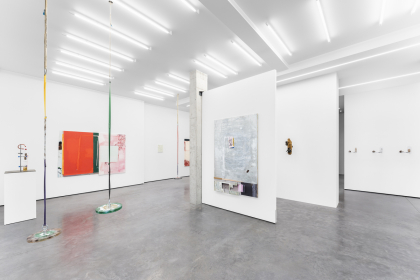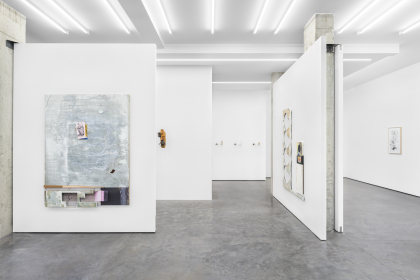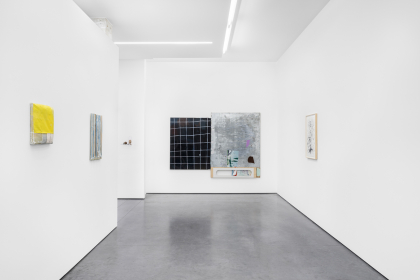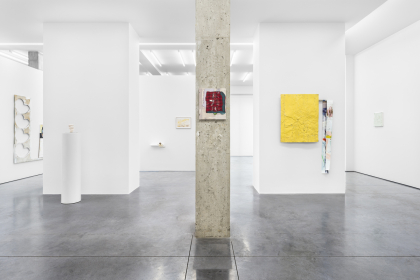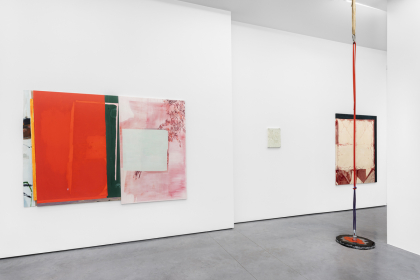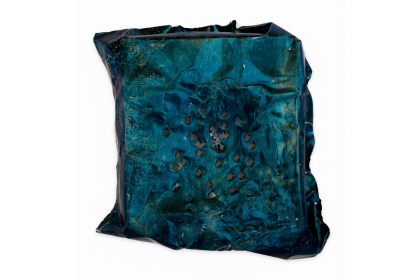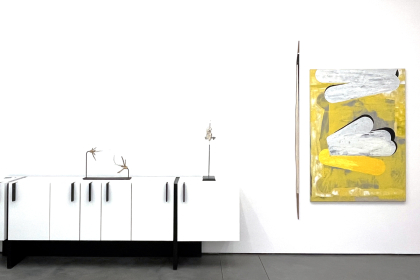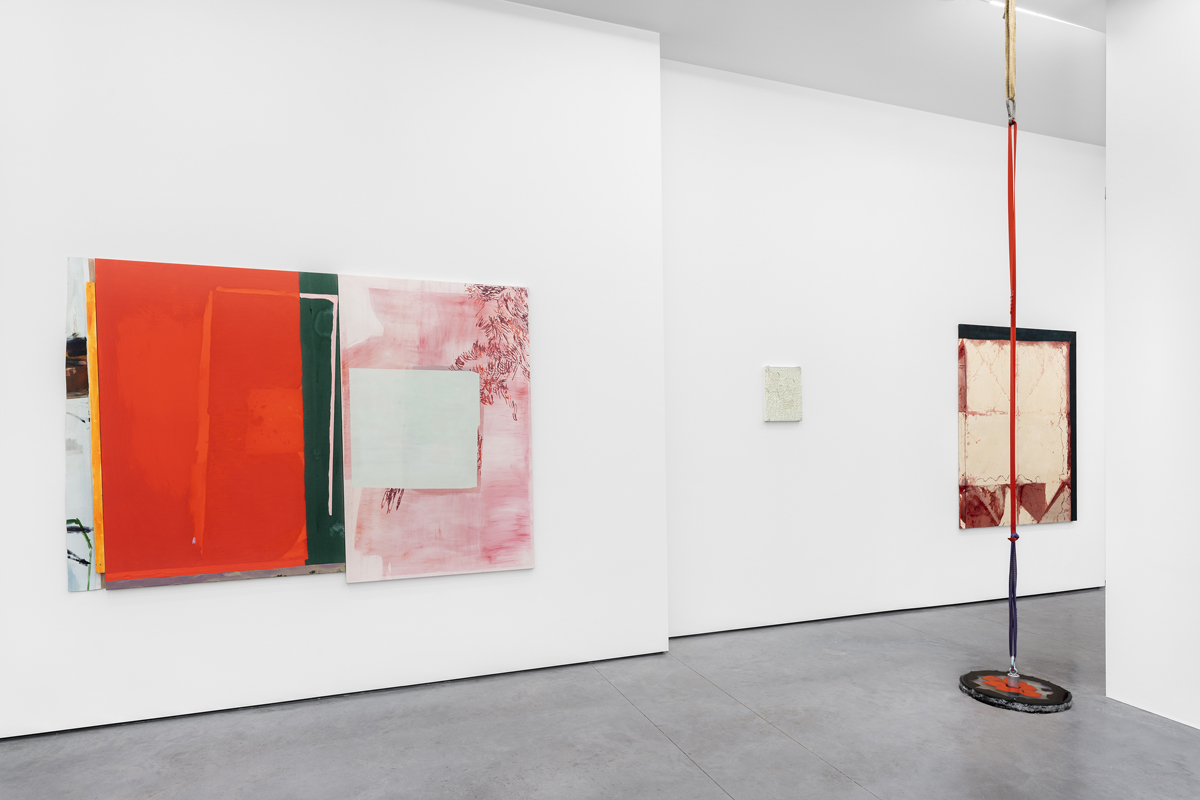
Cheer the Sum and Celebrate the Parts
The whole is greater than the sum of its parts. Yet all parts are indispensably unique. Each work by Hilde Overbergh is like a puzzle with pieces still unknown. She gathers them in the street, in containers, in fragments of the city or in objects of her own making. Her studio is a melting pot of very tactile materials: paint, cardboard, aluminium, wood, photography, textile, foam; transparent, shiny, hard, soft.
The found objects and materials have their own history as remnants of an everyday (and possibly banal) reality. They spend time in Overbergh's studio, where they are charged with the potential to start a whole new life. They are stripped of every former function and intuitively, empirically, gradually deconstructed.
The small paintings that she makes and keeps for herself share that same fate. She equally has the intention of treating them as deconstructed building blocks for other works. They may end up completely torn or cut. Painting is a necessary act, but only within her creative process, as a starting point for thinking, not as an end result. The status of these paintings in the studio is equal to the found fragments that she collects. She does not claim authorship over them, although she created them. Their ‘found’ value is therefore fictitious, in contrast to the materials that bring a documentary quality from the outside world. Fragments of historical masters also figure as collage elements. The sharpest viewers may recognize nudges to Edouard Vuillard or Francisco de Goya, among others. Leftover material from the busy city, historical references or her own mannerism: they all form equal pieces to the puzzle.
Especially during her education in Los Angeles, Overbergh found herself influenced by the American action painters and abstract expressionists. The way in which she processes daily and oftentimes damaged objects into a new whole invites associations with Robert Rauschenberg, for example. Just like in the case of Rauschenberg, quite a lot of her works end up on the wall, but they are not necessarily paintings in the strict sense of the word. Overbergh thinks like a painter, but works like a sculptor. On the one hand, she investigates how different layered textures influence each other. Her actions, on the other hand, consist of adding and removing. ‘Assemblage’ is probably the most fitting term.
Overbergh's work is very physical. Not only in the creating process, during which she drags and carries material parts about her studio, adds them, removes them, cuts them into pieces, saws them, tears them up or glues them together. Neither only in the size of the works, which have her own body as a reference. But especially in the tactile materiality, which is not a means but an end in itself. The work does not intend to be a representation or image of reality. It is a reality in and of itself.
Recently, Overbergh also started working with glass. She experimented with combining different types of coloured glass in round shapes – heavy discs that could evoke barbell weights, if they were not figuring here as floating swings in the exhibition space. This way, they enter into a dialogue with all the works on the walls, which seem more static, but nevertheless also carry a sense of mobility within them.
Through other, large-scale installations, Overbergh occasionally brings her studio into the exhibition. She often allows unfinished materials to enter into a dialogue with the space itself, thereby translating her process into the scenography. The works against the wall are in a seemingly finished state. However, she finds it is extremely important that a sense of process, action or interchangeability lingers. In theory, each work could return to her studio after the exhibition and transform into something else. The possibilities are endless.
Cheer the sum; celebrate the separate parts. With her assembled works, Overbergh appeals directly to our senses. No need for any mediation by rational associations, no need for a reference to anything else or something more: the material is a direct conveyor of information. It tells us things that cannot be captured in words. In a time when images of destruction flood our screens and eyes, Overbergh's work reminds us that remains can be a signal of new possibilities. She approaches destruction and residual material not with despair or disinterest, but with hopeful imagination; as a new beginning.
Tamara Beheydt

